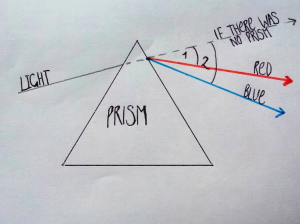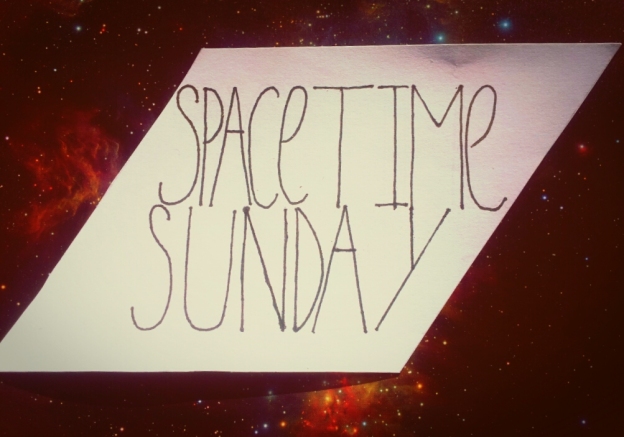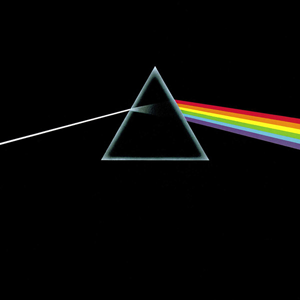When the Sun or Moon are low in the sky, they look orange or red. When they’re overhead they look yellow or white. But why?
Essentially, its a bit like what makes rainbows. White light is bent inside a raindrop, and is split up upon exiting. The similarity is that because light contains lots of waves of different wavelengths, (each wavelength corresponding to a different colour), these waves have different properties. One of which is how much waves are bent by refraction and scattering.
So in the rainbow case, the white line is sunlight, the prism is the raindrop, and the split spectrum is the rainbow. There has to be a specific angle the white light is coming in at for this to happen (the answer to life, the universe and everything, 42 degrees). This is refraction. It happens because the air outside and the raindrop inside have different extents to which the interfere with the straight line of the light ray, causing them to travel differently inside and outside.

The waves of light in the blue wavelengths are bent through a greater angle (2) than the angle of refraction of waves corresponding to red (1)
In the case of the sky, the white line is again sunlight, but this time, rather than being bent, the light is bouncing off the molecules like dust and air of our atmosphere, and this is scattering. Like we said before, different wavelengths behave differently in these events. You can see in the picture above, that the change in direction of the blue light after refraction is a lot more than the change in direction of the red light. The same is true for scattering, the blue light scatters a lot more than the red, spreading out across the sky, and along with humans not having many purple receptors in our eyes, the dominant colour in the sky is blue.
What about sunset then?
As the sun’s apparent position in the sky gets closer to the horizon, the more atmosphere the light has to pass through to get to us and that means more scattering, effectively filtering out the blue from the path of the sun’s rays. As the evening progresses, the sun will look like it is changing colour from yellow, to orange, to a stunning red, as the thickness of the atmosphere the light has to travel through increases and that means even more scattering of the blue light, allowing more of the reds than blue travelling straight to your eyes (though we wouldn’t look straight at the sun, would we!)
This is why sometimes cities have even better sunsets than somewhere with clear, unpolluted skies.
A simple experiment, to demonstrate much clearer than I can explain, is in this video. Start at 6:00 to see the experiment Tyndall did in the 1800’s recreated and explained by Prof Brian Cox, or better, watch the whole thing.
So next time someone answers a question with “Oh I don’t know, why is the sky blue?!” You can tell them exactly why!



Fascinating post thank you! I’m always intrigued by this kind of thing 🙂 is the particular shape of the rainbow, that bow shape, then due to the different angles that the various wavelengths are bent through as well?
I’m not 100% sure on this, but it is probably more to do with the relative position of where you are with respect to the sun. Only raindrops at the correct angle between you and the sun make up the rainbow, so it forms an arc. light exiting the raindrops are still going in a straight line, its kind of a composite effect, a collaboration with a large area of raindrops. Each rainbow will look slightly different to different people around the area.
Round raindrops => Round rainbow
From a friend
Thank you, friend 🙂